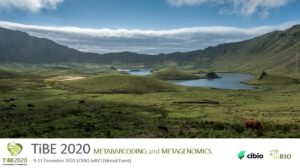IMPROVING FRESHWATER BIODIVERSITY ASSESSMENT: APPLICATION OF MOLECULAR TOOLS ON PRESERVATIVE ETHANOL FROM MACROINVERTEBRATE BULKS
IMPROVING FRESHWATER BIODIVERSITY ASSESSMENT: APPLICATION OF MOLECULAR TOOLS ON PRESERVATIVE ETHANOL FROM MACROINVERTEBRATE BULKS
Filipa MS Martins (CIBIO-InBIO, Portugal) | June 26, 2018 | XIX Congresso da Associação Ibérica de Limnologia, Coimbra, Portugal
Traditional biodiversity assessment methods rely on morphological identification of bioindicators species such as benthic macroinvertebrates. This is the case of the Water Framework Directive (WFD), the key legislation for the protection and sustainable use of European freshwater resources (2000/60/EC). The possibility of identifying all life stages is particularly relevant, but it requires high levels of specialization and expertise and entail procedures that are expensive and time consuming. Also, the majority of these bioindicator taxa are in their larval stage, which imposes constrains on their morphological identification at lower taxonomic levels (e.g. genus or species). Advanced molecular tools, such as metabarcoding, allow the processing of complex multi-species assemblages at greater resolution (up to species level), by combining DNA taxonomy with high-throughput DNA sequencing. Here, we demonstrate the potential use of preservative ethanol from macroinvertebrate bulk and metabarcoding tools to assess macroinvertebrate communities and biological quality of surface water bodies. We examined ethanol samples collected from five macroinvertebrate bulks of Tua sub-basin (Douro) and morphologically identified organisms down to the lowest practical taxonomic level. Our results showed that 60% of the taxa found in ethanol were macroinvertebrate taxa targeted by WFD, while the remaining percentage was identified as e.g. Bacteria, Stramenopiles, terrestrial invertebrates, amphibians and fishes. In comparison with morphological identification, molecular methods detected in average 70% of the WFD families and 86% of the EPTO (Ephemeroptera, Plecoptera, Trichoptera and Odonata) families. Yet, the percentage of families matching between ethanol metabarcoding and morphological identification increased when rare families (<5 individuals) were excluded (80 and 92.2% respectively) and was maximum on groups well represented in DNA reference databases, such as the order Trichoptera. Also, 113 species were successfully identified from ethanol samples but only half was detected morphologically. Ethanol metabarcoding can potentially be a faster, low-priced and more refined approach for assessing biological quality than traditional methods, by increasing taxonomic resolution and thus sensitivity of metrics to fine variations in stream ecosystem functioning. Nevertheless, further validation is needed as well as expanding the existing DNA reference databases.







